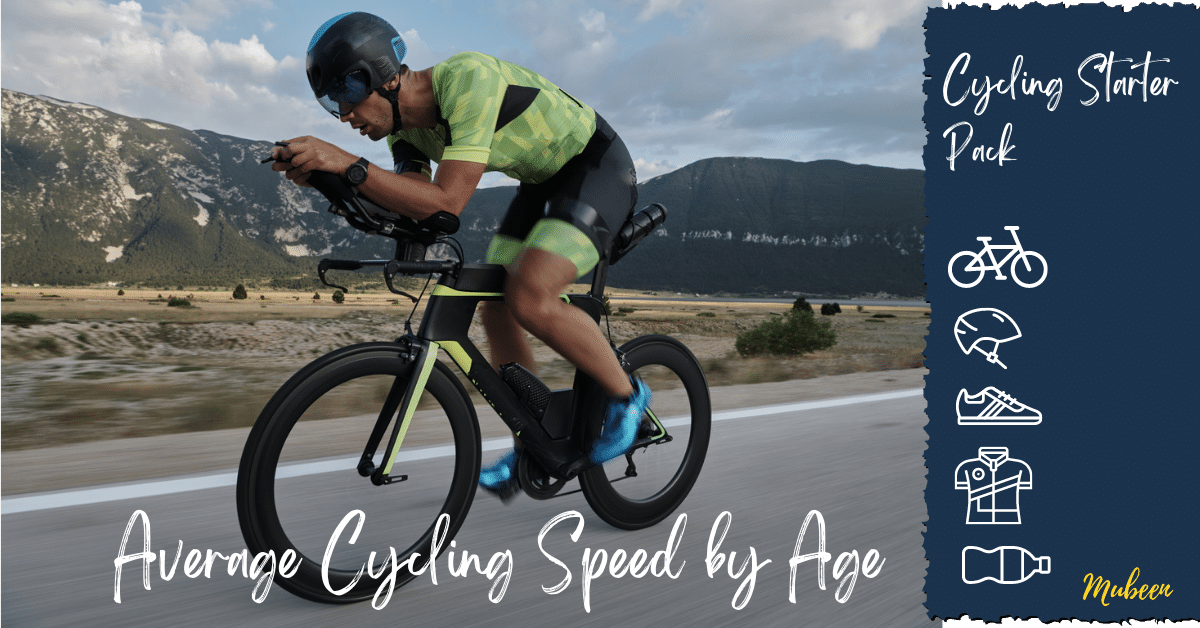Is there a relationship between age and average riding speed? As it turns out, your cycling speed peaks between 25 and 35 and then begins to decline. Cycling can only grow and reach faster speeds if cyclists calculate and monitor their speed. When you know your age’s average cycling speed, you can determine if you’re a fast or slow cyclist and use the info to your advantage.
Your average cycling speed is unquestionably proportional to your age. For example, an 18 to 25-year-old will have an average speed of 17 to 18.5 mph. In the meantime, 50 to 60-year-olds will average 12.5 to 13.5 mph.
Here is everything you need to know about it.
Table of Contents
ToggleThe Average Cycling Speed by Age: A Summary
Aside from age, there are numerous other elements that influence your riding pace. Age is indirectly related because your power naturally reduces as you become older, impacting your cycling speed. Without taking into account the other considerations, below is the average cycling speed by age:
- 18-35 years: 20.8-21.7 mph
- 35-40 years: 18.6 mph
- 45-50 years: 15 mph
- 50-55 years: 13.6 mph
To calculate the ideal FTP for your age and weight group visit FTP Calculator by Age
Cycling Speed Distribution by Age: Seniors
Cyclists over the age of 55 often travel at a slower average speed. However, until now, no credible research has been conducted on the direct relationship between age and cycling speed.
Most studies show that as a cyclist gets older, his or her cycling speed decreases. However, there is no further data that could be useful, and the topic requires further investigation.
Leaving out external considerations, bikers aged between 55 to 65 will travel at an average speed of 10.5-11.8 mph. Meanwhile, older riders will average at eight mph, depending on their physical condition.
External Factors Influencing Your Cycling Speed
External factors have the most influence on your riding speed. So, even if you do everything correctly, you may not attain your intended pace. This is due to the fact that you must consider drag, riding conditions, rolling resistance, and a few other things. Here’s a quick rundown of each of them.
1. Drag
The drag is the force created by the bike’s movement through the air. Simply put, while you bike, you are moving the air around you. This movement produces a frictional force known as drag.
If you want to be a professional cyclist, you should pay greater attention to drag. When it comes to speed, drag is one of the most important variables. That’s why you’ll see a lot of competitive products labeled ‘aero,’ as they’re designed to generate less drag and allow you to ride faster.
You should strive to reduce drag by altering your riding position and purchasing appropriate equipment.
2. Environmental Factors
Some environmental factors can dramatically reduce your riding speed. For example, even if the wind is light, it will cause extra resistance, causing your speed to slow. Other weather conditions, such as rain and freezing temperatures, can also lead you to go more slowly.
3. Resistance to Rolling
The friction of your tires against the riding surface is referred to as rolling resistance. This friction creates resistance, which may reduce your average speed. Selecting the correct tires may reduce rolling resistance when riding, allowing you to reach faster speeds more effectively.
There are other factors to consider, including tire width and pressure. Because more material rubs against the ground, wider tires have higher rolling resistance. The pressure is determined by the road you’re riding on. Lower pressure gives better speed while off-roading because the bike would normally jump up. Alternatively, if you’re riding on smooth terrain, you’ll need to increase the pressure of your tires to reduce friction.
4. Gravity
If you didn’t already know, gravity has a big impact on your riding speed. Both have a direct relationship. How quickly you can go is determined by your overall weight, the bike, and any packages you’re carrying. The gravity force on your bike increases as your weight grows. It’s simple physics; if you can reduce the weight of your bike, you’ll be able to cycle quicker because there will be less force pushing on you.
If you’re going to ride up a steep hill, you’ll need to be extra cautious because there will be greater power dragging you down. Riding Gear Whether it’s your helmet, your outfit, or the bike itself, your riding gear plays an important role in deciding your riding speed. If your bike is heavy, your speed will be reduced since the weight causes more gravitational force. Because carbon fiber is one of the lightest materials, it is often used to make sophisticated bikes.
5. Distance Riding
Believe it or not, the distance you’re riding may be the reason your speed is dropping. You’re usually slower at the start of your ride because your legs are still warming up. As a result, if your ride is only an hour or so long, the overall speed will be lower than usual. Longer rides will be faster since your legs will warm up and reach peak power. Rides that are too long will also have lower speeds since you will become fatigued, and weariness will set in.
How do I determine my Bike’s Speed?
Bike computers are an excellent method to keep track of your speed, distance, and other data when cycling. While they come in a variety of sizes and designs, most bike computers operate on the same fundamental principle: they use a magnet and a sensor to count wheel revolutions and then translate that to speed.
Conclusion
Because average cycling speed is indirectly connected to age, your riding speed may decrease as you get older. Other external factors, such as drag, gravity force, and even riding distance, can all have an impact on speed.
If you want to boost your riding speed, avoid carrying heavyweights and opt for a lightweight bike. You could also improve your riding stance to reduce drag.

